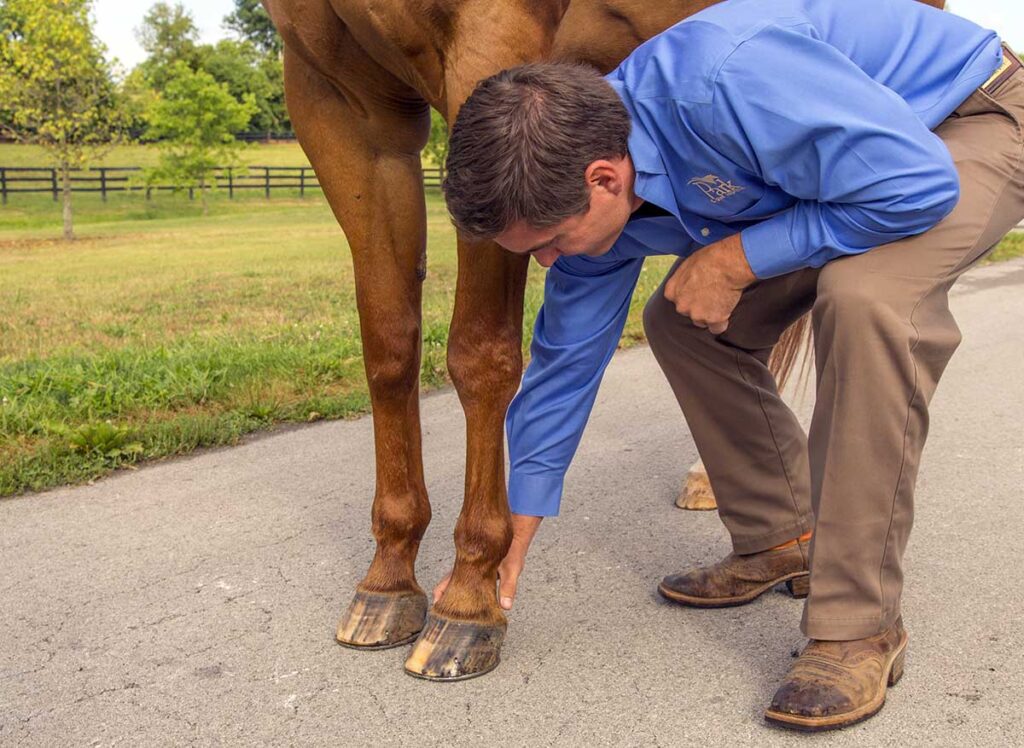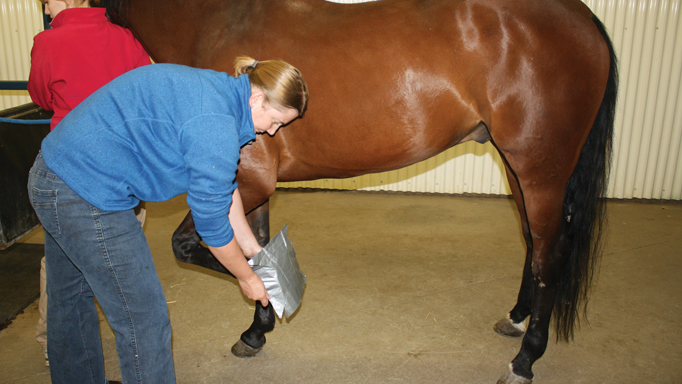Understanding how to properly care for a horse’s hoof abscess is crucial. Equestrians must be well-informed about the care and maintenance of their horses’ hooves. This comprehensive guide will explain how long to soak hoof abscess and the best practices to ensure swift recovery.
Hoof abscesses are common and can occur when bacteria get trapped in the horse’s hoof, leading to infection and inflammation. Knowing how long to soak hoof abscess can significantly affect the healing process. Generally, soaking is done to soften the hoof, allowing the abscess to drain more easily.

What is a Hoof Abscess?
A hoof abscess is an infection within the hoof, typically caused by bacteria entering through cracks, punctures, or holes in the hoof. Symptoms include lameness, heat in the hoof, and swelling in the leg. Early detection and proper treatment are essential to prevent more serious conditions.

Signs and Symptoms of a Hoof Abscess
- Lameness or difficulty in walking
- Heat in the hoof
- Pulsing in the blood vessels near the fetlock
- Swelling in the limb
Recognizing these signs early can lead to faster treatment and recovery. If you see any of these symptoms, it is vital to consult with a veterinarian immediately.

The Importance of Soaking the Hoof
Soaking the hoof is a common practice in treating abscesses. This process helps to soften the hoof, making it easier for the abscess to rupture and drain, which relieves pressure and reduces pain. Many horse owners find that soaking significantly speeds up the healing process.
How Long Should You Soak the Hoof Abscess?
The primary question many horse owners ask is, how long to soak hoof abscess? Typically, veterinarians recommend soaking the affected hoof for about 20 to 30 minutes, once or twice a day. The duration can depend on the severity of the abscess and the veterinarians advice.
The Role of Epsom Salt in Soaking
Using Epsom salt when soaking a hoof abscess is highly effective. Epsom salt helps in drawing out the infection and providing relief. To prepare the soaking solution, mix about 2 cups of Epsom salt in a gallon of warm water.
Soaking Techniques and Tools
When it comes to soaking techniques, using a soaking boot or a sturdy bucket can be very helpful. Ensure the water level covers the entire hoof up to at least the fetlock.
Using a Soaking Boot
A soaking boot is designed to stay in place and keep the water around the hoof. This tool is especially useful if your horse is restless.
Using a Bucket
If you use a bucket, make sure it’s sturdy and large enough for your horse to comfortably place its foot in it. Keep the horse calm and gently lower its hoof into the solution.
Post-Soak Care
After soaking, it’s important to provide proper post-soak care. Dry the hoof thoroughly and apply a drawing paste or poultice to keep the area clean and encourage further drainage.
Using a Poultice
Wrap the hoof with a hoof wrap or diaper filled with a drawing paste like ichthammol. This helps in keeping the area clean and promotes healing.
Keeping the Area Clean
Ensuring the hoof stays clean and dry after soaking is crucial. A clean, dry environment prevents further infection and aids the healing process.
When to Call the Veterinarian?
If the abscess does not drain within a few days or if the horse remains lame, it’s crucial to seek veterinary assistance. The veterinarian might need to open the abscess to allow it to drain more effectively.
Preventing Hoof Abscesses
Prevention is always better than cure. Regular hoof care and maintenance can significantly reduce the risk of hoof abscesses. Here are some tips:
- Regularly clean and inspect your horse’s hooves.
- Ensure proper hoof trimming and shoeing.
- Provide a clean, dry environment for your horse.
- Address any hoof cracks or punctures immediately.
Common Mistakes to Avoid
When treating hoof abscesses, avoiding common mistakes can lead to a faster recovery. Some common mistakes include:
- Not soaking the hoof long enough.
- Failing to keep the hoof clean and dry after soaking.
- Ignoring signs of infection or worsening symptoms.
Case Studies and Success Stories
Learning from the experiences of others can be very helpful. Here are some success stories from horse owners who effectively treated hoof abscesses:
Case Study 1: Jane’s Thoroughbred
Jane’s thoroughbred developed a hoof abscess, and by diligently soaking the hoof with Epsom salt for 30 minutes daily and applying a drawing paste, the abscess drained, and the horse was back to soundness in a week.
Case Study 2: Mike’s Quarter Horse
Mike’s quarter horse had a severe hoof abscess, and with veterinary guidance, he soaked the hoof twice daily and used a soaking boot. The abscess resolved within five days with no further complications.
FAQs
How often should I check my horse’s hooves?
Regularly check your horse’s hooves daily, and more thoroughly during routine grooming sessions. Early detection of any abnormalities can help in quick treatment.
Can I use other solutions besides Epsom salt for soaking?
While Epsom salt is commonly used, other solutions recommended by veterinarians include betadine or magnesium sulfate. Always consult with your vet before trying new treatments.
Is it normal for the horse to be lame after soaking?
It’s common for a horse to be lame during and shortly after treatment; however, if lameness persists, consult with your veterinarian immediately.
Conclusion
Understanding how long to soak hoof abscess and following proper care techniques can significantly impact your horse’s recovery. Remember, patience, persistence, and proper care are essential. Always consult with a veterinarian to tailor the best treatment plan for your horse. By following these guidelines, you’re ensuring a speedy and effective recovery for your equine friend.
For a more detailed understanding, you can visit Hoof Abscesses in Horses.
For more great reads, check out our other articles like how often to wash saddle pads, impact gel saddle pads, and ride without a saddle or bridle.
As an Amazon Associate, I earn from qualifying purchases.
